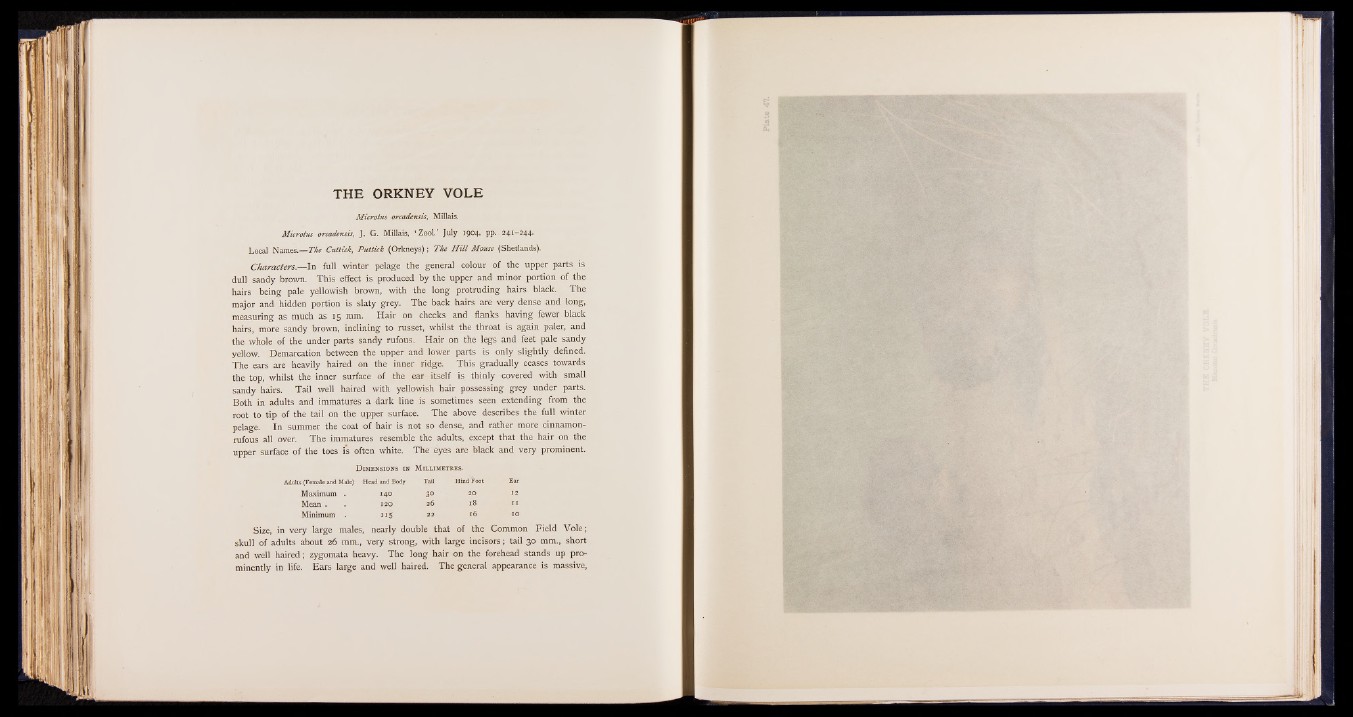
THE ORKNEY VOLE
Microtus orcadensis, Millais.
Microtits orcadensis, J. G. Millais, ‘ Zool.’ July i9° 4> PP- 241—244.
Local Names.—The Ctittick, Puttick (Orkneys); The H ill Mouse (Shetlands).
Characters.—I n full winter pelage the general colour of the upper parts is
dull sandy brown. This effect is produced by the upper and minor portion of the
hairs being pale yellowish brown, with the long protruding hairs black. The
major and hidden portion is slaty grey. The back hairs are very dense and long,
measuring as much as 15 mm. Hair on cheeks and flanks having fewer black
hairs, more sandy brown, inclining to russet, whilst the throat is again paler, and
the whole of the under parts sandy rufous. Hair on the legs and feet pale sandy
yellow. Demarcation between the upper and lower parts is only slightly defined.
The ears are heavily haired on the inner ridge. This gradually ceases towards
the top, whilst the inner surface of the ear—itself is, thinly covered with small
sandy hairs. Tail well haired with yellowish hair possessing grey under parts.
Both in adults and immatures a dark line is sometimes seen extending from the
root to tip of the tail on the upper surface. The above describes the full winter
pelage. In summer the coat of hair is not so dense,, and rather more cinnamon-
rufous all over. The immatures resemble the adults; except that the hair on the
upper surface of the toes i*s often white. The eyes are black and very prominent.
D im en s io n s in M il l im e t r e s .
Adults (Female and Male) Head and Body Tail Hind Foot Ear
Maximum . 140 30 20 12
Mean . 120 26 18 I I
Minimum . 1 15 22 l6 IO
Size, in very large males, nearly double that of the Common Field Vole;
skull of adults about 26 mm., very strong, with large incisors; tail 30 mm., short
and well haired; zygomata heavy. The long hair on the forehead stands up prominently
in life. Ears large and well haired. The general appearance is massive,